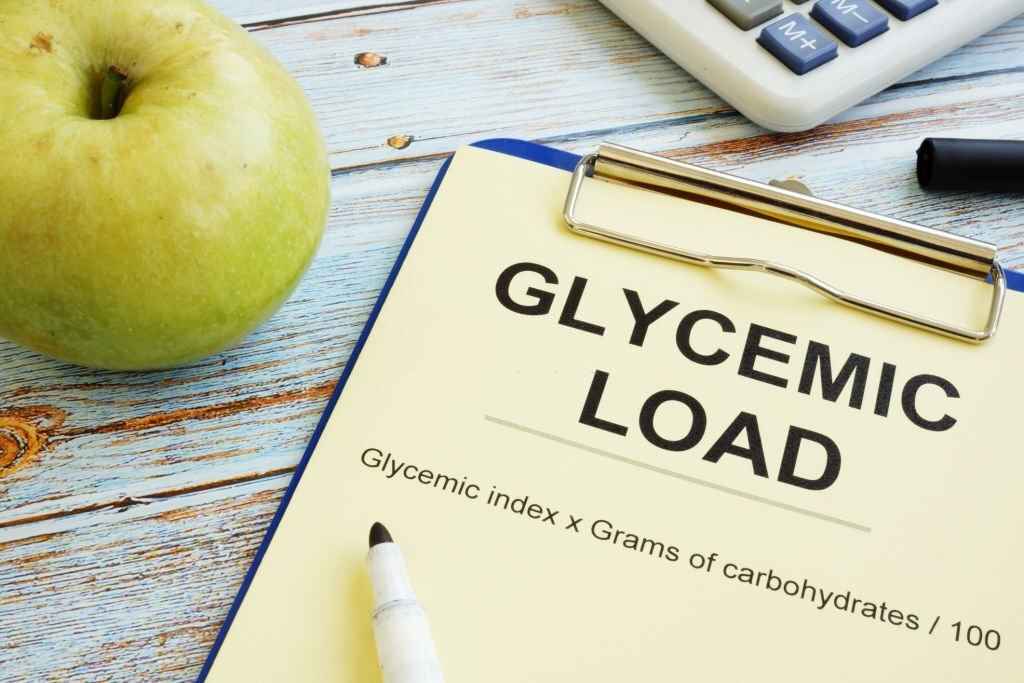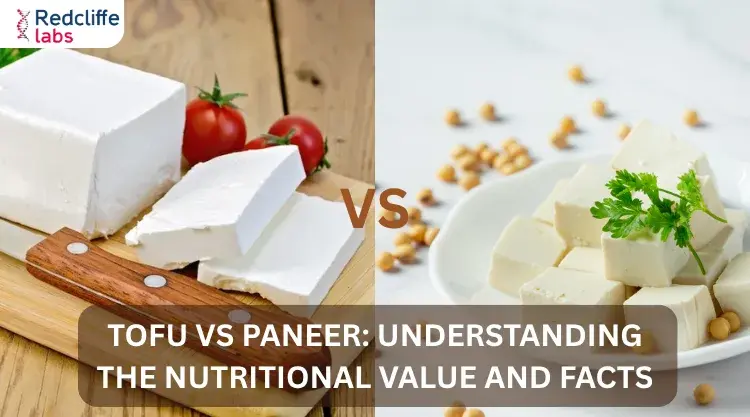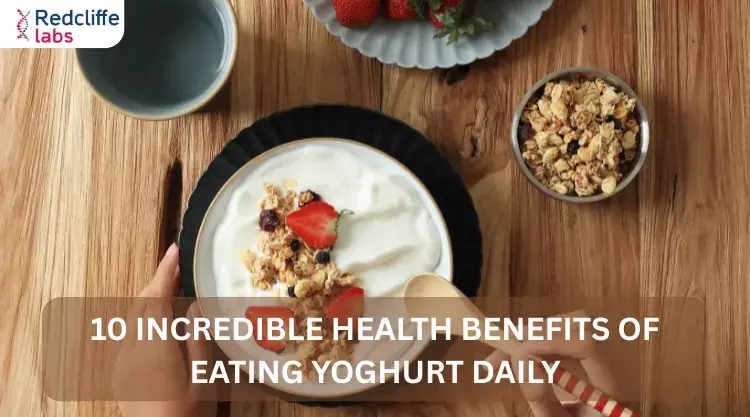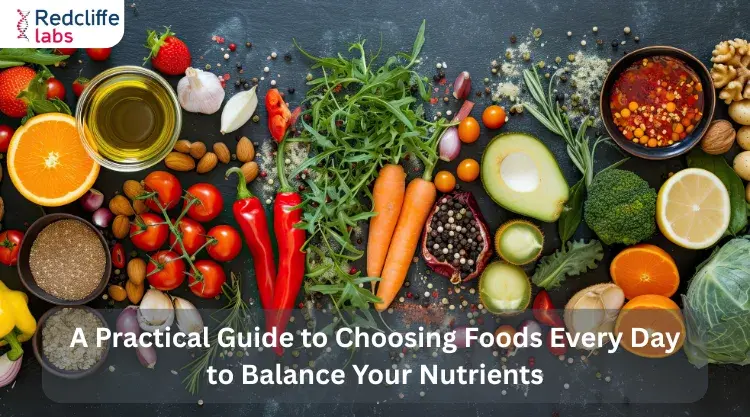Glycemic Index Food Chart List of Low and High GI Indian Foods

Medically Reviewed By
Dr. Ragiinii Sharma
Written By Prekshi Garg
on Feb 15, 2022
Last Edit Made By Prekshi Garg
on Oct 8, 2025

With the increasing cases of diabetes in recent times, the carbohydrate content present in food has become one of the most important parameters for consideration. This content is measured experimentally and presented in the form of a glycemic index. Glycemic index (GI) refers to the ranking given to different food items on the basis of their carbohydrate content or the pace at which they raise the level of sugar in the blood. In this article, you can peek into the glycemic index of different commonly consumed Indian food items that will help you decide on an appropriate diet for yourself.
Maintaining a healthy diet is a preventive measure we take for a healthy body. Why don't we pay the same importance to regular testing? If you are diagnosed with diabetes or are at risk of diabetes, look out for the signs of high blood glucose like frequent urination, fatigue, blurred vision, etc. Get a complete blood glucose analysis to regulate the levels as needed.
In this Article
Glycemic Index Classification
Based on the carbohydrate content present in different food, there are three categories of the glycemic index. The glycemic index is calculated as per the international standards. According to the international standards, 50 grams of digestible carbohydrate is given to 10 or more people and the blood glucose level is measured after 2 hours to determine the effect of food on the blood glucose level. The glycemic index can be of three types:
-
High Glycemic Index: When the GI of food ranges from 100 - 70, then it is considered as a high glycemic index food. Since these food items increase the sugar level, they are not considered good for a diabetic patient.
-
Moderate Glycemic Index: When the GI of food ranges from 69 - 56, then it is considered as a moderate glycemic index food.
-
Low Glycemic Index: When the GI of food ranges from 55 - 0, then it is considered as a low glycemic index food. Since these food items do not increase the blood sugar level, they must be included in your diet if you are a diabetic patient.
Indian Foods with Low Glycemic Index:
The Indian food items which are calculated to have a low glycemic index, that is, less than 55 are listed below:
|
S.No. |
Food Group |
Food |
Glycemic Index |
|
1. |
Cereals |
Barley |
28 |
|
2. |
Oatmeal |
55 | |
|
3. |
Bran |
55 | |
|
4. |
Quinoa |
53 | |
|
5. |
Corn |
52 | |
|
6. |
Peanuts |
13 | |
|
7. |
Spaghetti |
46 | |
|
8. |
Poha |
Low | |
|
9. |
Whole wheat |
54 | |
|
10. |
Daliya |
55 | |
|
11. |
Pulses |
Green gram |
38 |
|
12. |
Black-eye peas (Lobia) |
33 | |
|
13. |
Chickpea (Chole) |
28 | |
|
14. |
Soybean |
15 | |
|
15. |
Kidney bean (Rajma) |
29 | |
|
16. |
Vegetables |
Ladyfinger |
20 |
|
17. |
Green beans |
32 | |
|
18. |
Onion |
10 | |
|
19. |
Cabbage |
0 - 10 | |
|
20. |
Green peas |
22 | |
|
21. |
Radish |
8 | |
|
22. |
Brinjal |
15 | |
|
23. |
Cauliflower |
10 | |
|
24. |
Cucumber |
15 | |
|
25. |
Carrot |
16 | |
|
26. |
Broccoli |
10 | |
|
27. |
Peppers |
15 | |
|
28. |
Tomato |
< 15 | |
|
29. |
Fruits |
Apricots |
34 |
|
30. |
Apple |
36 | |
|
31. |
Oranges |
43 | |
|
32. |
Dates |
42 | |
|
33. |
Strawberry |
49 | |
|
34. |
Grapefruit |
25 | |
|
35. |
Peaches |
42 | |
|
36. |
Kiwi |
39 | |
|
37. |
Prunes |
29 | |
|
38. |
Plum |
40 | |
|
39. |
Pears |
30 | |
|
40. |
Berries |
< 40 | |
|
41. |
Pomegranate |
18 | |
|
42. |
Guava |
12 (approx.) | |
|
43. |
Banana |
51 | |
|
44. |
Figs |
51 | |
|
45. |
Mango |
51 | |
|
46. |
Dairy products |
Milk |
39 |
|
47. |
Curd |
28 | |
|
48. |
Yoghourt |
41 | |
|
49. |
Paneer |
27 | |
|
50. |
Buttermilk |
20 (approx.) | |
|
51. |
Others |
Cheese |
0 - 10 |
|
52. |
Walnuts |
15 | |
|
53. |
Almonds |
0 | |
|
54. |
Fish |
0 | |
|
55. |
Sunflower or pumpkin seeds |
25 | |
|
56. |
Meat |
0 | |
|
57. |
Eggs |
0 | |
|
58. |
Mutton |
0 | |
|
59. |
Chicken |
0 | |
|
60. |
Beef |
0 | |
|
61. |
Dark Chocolate |
23 | |
|
62. |
Milk chocolate |
42 |
Indian Foods with High Glycemic Index:
The Indian food items which are calculated to have a high glycemic index, that is, greater than 70 are listed below:
|
S.No. |
Food Group |
Food |
Glycemic Index |
|
1. |
Cereals |
White rice |
73 |
|
2. |
Puffed rice |
82 | |
|
3. |
Bread |
75 | |
|
5. |
Instant oats |
83 | |
|
6. |
Jowar |
77 | |
|
7. |
Wheat |
74 | |
|
8. |
Refined flour (Maida) |
71 | |
|
9. |
Vegetables |
White potato |
78 |
|
10. |
Pumpkin |
75 | |
|
11. |
Fruits |
Grapes |
59 |
|
12. |
Watermelon |
76 | |
|
13. |
Muskmelon |
65 | |
|
14. |
Others |
Jaggery |
84.4 |
|
15. |
Cake | ||
|
16. |
Cornflakes |
93 | |
|
17. |
Cookies |
70 (approx.) |
Indian Foods with Moderate Glycemic Index:
The Indian food items which are calculated to have a moderate glycemic index, that is, between 55 - 70, are listed below:
|
S.No. |
Food Group |
Food |
Glycemic Index |
|
1. |
Cereals |
Muesli |
57 |
|
2. |
Rye |
64 | |
|
3. |
Brown rice |
50 | |
|
4. |
Couscous |
65 | |
|
5. |
Basmati rice |
55 | |
|
6. |
Vegetables |
Yam |
54 |
|
7. |
Beetroot |
61 | |
|
8. |
Sweet potato |
70 | |
|
9. |
Fruits |
Papaya |
60 |
|
10. |
Cantaloupe |
65 | |
|
11. |
Pineapple |
59 | |
|
12. |
Raisins |
64 | |
|
13. |
Dairy products |
Ice-cream |
57 |
|
14. |
Others |
Honey |
61 |
|
15. |
Table Sugar |
63 | |
|
16. |
Brown sugar |
64 | |
|
17. |
Noodles |
53 | |
|
18. |
Soft drinks |
65 |
Takeaway
Now, that you know what glycemic index is and how it can affect your health, you can surely have a much healthier diet without the need of any dietician. You will be able to observe a big change in your diabetes by simply replacing high glycemic index food with options that have low glycemic index.
Frequently Asked Question (FAQ)
-
How can I calculate the glycemic index of packaged food?
The glycemic index of a food is dependent upon the content of carbohydrates present in the food. Therefore, as the total carbohydrate content labeled at the back of the packaged food increases, the glycemic index of the food also increases.
-
What are the benefits of having a diet rich in low glycemic index food?
It is very important to have a diet that is rich in low glycemic index food not only for diabetic patients but for everyone. The major benefits of glycemic index food are;
-
Low GI food controls the blood glucose level by increasing the sensitivity of the body to insulin.
-
Low GI food controls cholesterol level
-
Low GI food controls appetite
-
Low GI food lowers the risk of heart disease
-
Low GI food lowers the risk of type II diabetes
-
How can I include low glycemic index food in my diet?
Certain tips that can help you include more low GI food easily into your diet are:
-
Prefer fresh fruits and vegetables instead of canned fruits and juices.
-
Consume more whole pulses than washed pulses
-
Avoid having refined grains that may include in your diet in the form of white rice, white bread, and low fiber cereals. Instead, you can prefer whole-grain food items like brown bread, chapati, pasta, cereals, and rice.
-
Include fiber-rich vegetables in your diet like green beans, eggplant, carrot, cauliflower, tomato, cucumber, broccoli, and leafy green vegetables instead of having starchy vegetables like yam or potato.
-
Consume nuts like walnuts, almonds, and peanuts.
-
Include flax seeds and sunflower seeds in your diet as well.
-
Low-fat dairy products and non-vegetarian food items like seafood, meat, and eggs also have a low GI and thus should be included in your diet.
-
Avoid consuming processed food, street food, or fast food.
Leave a comment
14 Comments
Rajendra Desai
Dec 9, 2025 at 5:21 PM.
Excellent information
Myhealth
Dec 10, 2025 at 1:35 PM.
Thankyou! We are very glad you have liked the information.
Ikyereve Msughter Gabriel
Dec 21, 2024 at 6:43 PM.
Highly educative
Myhealth Team
Jan 8, 2025 at 9:55 AM.
Thankyou! We are glad you have liked the information.
న్ వి ల్. దేవి
Nov 28, 2024 at 3:14 AM.
రైస్ తగ్గించి ఓట్స్ తినవచ్చా
Myhealth Team
Nov 28, 2024 at 11:13 AM.
ఓట్స్ను రైస్కి ప్రత్యామ్నాయంగా తీసుకోవచ్చు, కానీ ఇది మీ డైట్, ఆరోగ్యం మరియు గోల్పై ఆధారపడి ఉంటుంది. ఓట్స్ లో ఫైబర్, ప్రోటీన్ మరియు తక్కువ గ్లైసెమిక్ ఇండెక్స్ ఉండటంతో రక్తంలో షుగర్ స్థాయిలను నియంత్రించడంలో సహాయపడుతుంది. కానీ, మీరు రైస్ను పూర్తిగా తగ్గించడంలో ముందు మీ డైటిషియన్ లేదా డాక్టర్తో చర్చించడం మంచిది.
Rabindra kumar Behera
Oct 9, 2024 at 1:29 AM.
Nice report n really helpful for me.
Myhealth Team
Oct 13, 2024 at 6:46 PM.
We are glad to hear that you found the information helpful! If you have any more questions or need further assistance, feel free to ask. Your health and understanding are important, and we are here to help!
hemachandra manamperi
Aug 24, 2024 at 2:29 PM.
I read somewhere GI in boiled rice becomes lower when kept 24hrs in the refrigerator because it is converted to 'Resistant Starch'. Please advise. Thanks for the informative article.
Myhealth Team
Jul 3, 2025 at 11:06 AM.
Yes, refrigerated rice has more resistant starch, which can help gut health and lower blood sugar spikes compared to freshly cooked rice. Just reheat safely to avoid food poisoning.
Anshu Jain
Jul 1, 2025 at 11:56 AM.
Is it better then to have rice that is refrigerated than freshly cooked ?
MyHealth Team
Aug 24, 2024 at 6:29 PM.
Yes, you're right. When boiled rice is refrigerated for 24 hours, some of its starch converts to "resistant starch." This type of starch is less easily digested and can lower the glycemic index (GI) of the rice, leading to a slower rise in blood sugar levels. This process can make the rice a better option for managing blood sugar levels compared to freshly cooked rice. Thanks for your positive feedback!
Nagendra VN
Aug 24, 2024 at 9:03 AM.
Good information.
MyHealth Team
Aug 24, 2024 at 6:34 PM.
We are glad you have liked the information!
NAGENDRA VN
Aug 24, 2024 at 1:30 AM.
Thanks for the information on GI. Will help many Diabetics.
MyHealth Team
Aug 24, 2024 at 6:39 PM.
We are glad you have liked the information!
V N Murali
Aug 7, 2024 at 12:32 PM.
Very high value information in minimum words.
MyHealth Team
Aug 9, 2024 at 5:49 PM.
Thanks, We are glad you have liked the information!
MUDDE VENKATA RAMANA
Jul 12, 2024 at 4:45 PM.
Best information for better living
MyHealth Team
Aug 5, 2024 at 10:05 AM.
We are glad you have liked the information!
Durgesh Vaishya
Jun 12, 2024 at 4:35 AM.
My fasting blood sugar level is always high, what to do
MyHealth Team
Jun 12, 2024 at 5:16 PM.
If your fasting blood sugar levels are consistently high, it's crucial to consult your doctor for personalized advice. Focus on a balanced diet low in sugar and refined carbs, engage in regular exercise, and take any prescribed medications as directed. Regularly monitor your blood sugar levels and manage stress effectively.
Ashwini
Jun 3, 2024 at 3:03 PM.
Thank you
MyHealth Team
Jun 3, 2024 at 5:10 PM.
You're Welcome
Shiba Prasad Barman
May 17, 2024 at 7:01 PM.
I need a diet of hypoglycemia, I am type 2 diabet Now improved hba1c 6.8. Got hypoglycemia often.
Myhealth Team
May 20, 2024 at 12:44 PM.
When managing hypoglycemia alongside type 2 diabetes, it's crucial to adopt a balanced diet that promotes stable blood sugar levels. Opt for small, frequent meals and snacks throughout the day, focusing on complex carbohydrates like whole grains, lean protein sources, and healthy fats. Limit intake of sugary foods and refined carbohydrates to prevent rapid fluctuations in blood sugar. Monitoring portion sizes, staying hydrated, and eating meals at consistent times are also important strategies. Consulting a dietitian specialized in diabetes management can provide tailored guidance to ensure your dietary choices support optimal blood sugar control while minimizing the risk of hypoglycemia.
Shriram Bhalerao
Dec 23, 2023 at 12:04 PM.
Highly diabetic.. Suggest
Myhealth Team
Dec 28, 2023 at 11:24 AM.
Follow prescribed medications, maintain a balanced diet, engage in regular exercise, monitor blood sugar, manage weight, stay hydrated, and have regular check-ups for diabetes management. Consult your healthcare professional for personalized advice.
Dr s jasti
Nov 28, 2023 at 6:15 AM.
Informative and essential for modern or today's life style like stress and mood
Myhealth Team
Nov 29, 2023 at 12:53 PM.
Prioritize mental health in today's lifestyle. Use mindfulness, exercise, and a balanced diet to manage stress and mood. Seek support when needed.



